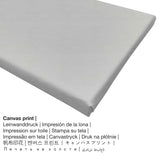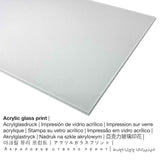Mary Cassatt, 1884 - Children Playing on the Beach - fine art print
Tax included. Shipping calculated at checkout.
"Children Playing on the Beach" as an art replica
In 1884 Mary Cassatt painted the artpiece titled "Children Playing on the Beach". The over 130 years old original measures the size: 97,4 x 74,2 cm (38 3/8 x 29 3/16 in) and was crafted with the techinque oil on canvas. This artpiece can be viewed in in the National Gallery of Art's collection. This artpiece, which belongs to the public domain is included with courtesy of National Gallery of Art, Washington.: . On top of that, alignment is in portrait format and has a side ratio of 3 : 4, which implies that the length is 25% shorter than the width. The painter, graphic artist, printmaker Mary Cassatt was a North American artist, whose artistic style can primarily be assigned to Impressionism. The American painter was born in 1844 in Allegheny City, Pittsburgh, Allegheny county, Pennsylvania, United States, neighborhood and died at the age of 82 in the year 1926 in Le Mesnil-Theribus, Hauts-de-France, France.
Product materials you can pick from
In the dropdown menu next to the product you can pick your prefered material and size. Pick your preferred size and material between the subsequent options:
- Printed poster (canvas material): A poster is a printed flat canvas paper with a slightly roughened finish on the surface. Please bear in mind, that depending on the absolute size of the poster we add a white margin between 2-6cm round about the painting, which facilitates the framing with your custom frame.
- Aluminium print (aluminium dibond): Aluminium Dibond prints are prints on metal with an impressive depth effect. A non-reflective surface creates a modern look. The Direct Print on Aluminum Dibond is your perfect start to fine art reproductions on aluminum. The colors of the print are bright and vivid in the highest definition, the fine details of the print appear clear and crisp.
- Acrylic glass print (with real glass coating): The acrylic glass print, often named a UV print on plexiglass, will change your favorite artwork into beautiful home decoration and is a good alternative option to aluminium or canvas art prints. The work of art is being manufactured with the help of modern UV print machines. It creates intense and impressive color hues.
- The canvas print: The printed canvas material applied on a wooden frame. Additionally, a canvas print produces a lovely and appealing appearance. The advantage of canvas prints is that they are relatively low in weight, meaning that it is easy and straightforward to hang your Canvas print without any wall-mounts. Canvas prints are suitable for all types of walls.
Important legal note: We try what we can to depict the products in as much detail as we can and to demonstrate them visually. However, the pigments of the printing material, as well as the printing might vary somehwat from the presentation on the device's monitor. Depending on the settings of your screen and the quality of the surface, colors might not be printed 100% realistically. Since all the are printed and processed by hand, there might as well be minor variations in the motif's exact position and the size.
Item table
| Print prodct: | fine art print |
| Reproduction method: | digital reproduction |
| Manufaturing technique: | digital printing (UV direct print) |
| Production: | made in Germany |
| Type of stock: | production on demand |
| Intended product usage: | home design, gallery wall |
| Image alignment: | portrait alignment |
| Aspect ratio: | length to width 3 : 4 |
| Image ratio implication: | the length is 25% shorter than the width |
| Material choices: | poster print (canvas paper), metal print (aluminium dibond), canvas print, acrylic glass print (with real glass coating) |
| Canvas print (canvas on stretcher frame) size variants: | 30x40cm - 12x16", 60x80cm - 24x31", 90x120cm - 35x47", 120x160cm - 47x63" |
| Acrylic glass print (with real glass coating) size variants: | 30x40cm - 12x16", 60x80cm - 24x31", 90x120cm - 35x47", 120x160cm - 47x63" |
| Poster print (canvas paper) sizes: | 30x40cm - 12x16", 60x80cm - 24x31", 90x120cm - 35x47" |
| Aluminium print size options: | 30x40cm - 12x16", 60x80cm - 24x31", 90x120cm - 35x47" |
| Picture frame: | no frame |
Work of art specs
| Piece of art title: | "Children Playing on the Beach" |
| Artwork classification: | painting |
| General category: | modern art |
| Temporal classification: | 19th century |
| Created in the year: | 1884 |
| Artwork age: | 130 years old |
| Medium of original artwork: | oil on canvas |
| Size of the original work of art: | 97,4 x 74,2 cm (38 3/8 x 29 3/16 in) |
| Exhibited in: | National Gallery of Art |
| Place of museum: | Washington D.C., United States of America |
| Available under: | www.nga.gov |
| License: | public domain |
| Courtesy of: | National Gallery of Art, Washington |
Artist table
| Name: | Mary Cassatt |
| Alternative names: | Mary Cassatt, cassat mary, קאסאט מארי, Cassatt, cassatt mary, Cassatt Mary, m. cassatt, Mary Stevenson Cassatt, Cassatt Mary Stevenson |
| Gender: | female |
| Nationality of artist: | American |
| Professions of the artist: | painter, printmaker, graphic artist |
| Home country: | United States |
| Classification: | modern artist |
| Styles of the artist: | Impressionism |
| Lifetime: | 82 years |
| Year of birth: | 1844 |
| Born in (place): | Allegheny City, Pittsburgh, Allegheny county, Pennsylvania, United States, neighborhood |
| Year of death: | 1926 |
| Deceased in (place): | Le Mesnil-Theribus, Hauts-de-France, France |
© Copyright of, Artprinta.com (Artprinta)
Additional description by National Gallery of Art (© - National Gallery of Art - National Gallery of Art)
By the time Cassatt exhibited this painting at the eighth and final impressionist exhibition in 1886, her reputation as a painter of mothers and children had been well established. Critics had long commented on her ability to portray her subjects in a tender, yet unsentimental, way: "Oh, my God! those babies! How those portraits have made my flesh crawl, time and again!—A whole passel of English and French smearers has painted them in such stupid, pretentious poses! . . . For the first time, thanks to Mlle. Cassatt, I have seen effigies of enchanting tots, calm and bourgeois scenes, painted with an utterly charming sort of delicate tenderness."
Cassatt's focus on a limited range of subjects allowed her to experiment with both the formal elements and painterly qualities of a composition. Her interest in Japanese prints and the process of printmaking can be seen in much of her work after 1883, including Children Playing on the Beach. In this work, Cassatt tightly cropped the scene, tilted the picture plane forward, and reduced the number of objects in the background to draw attention to the two little girls digging in the sand. Absorbed in their activity, they embody the naturalistic attitude prevalent in both art and literature of the time.
Various shades of blue—from the deep electric blue of the dress and shoes to the soft, diffused blue of the ocean—are used throughout the work. Accents of white convey the presence of sunlight bouncing off the dresses, hats, and pails of the little girls. While particular attention is paid to the building of form through color and line in the foreground, the background is reduced to its essential elements through a series of thinly painted scumbles, leaving areas of the priming layer exposed.
Aspects of the painting suggest that it is a nostalgic tribute to Cassatt's beloved sister, Lydia, who died in 1882. Cassatt was so distraught over Lydia's death that she did not paint for six months. Without revealing the identity of the little girls specifically, Cassatt depicted them in a manner that implies that they are related. Playing close together, the girls are comfortable with each other's presence. By positioning them side by side in nearly identical outfits, Cassatt established both a compositional and psychological relationship between the two figures.
As the primary caretaker of her elderly parents and older sister, Cassatt spent much of her adult life juggling the seemingly incompatible roles of nurse-companion and independent artist. In 1884, Cassatt accompanied her ailing mother to Spain to seek the recuperative effects of the seaside climate. Children Playing on the Beach is generally believed to have been painted after her return. Although completed in the studio—x-radiograph studies reveal that Cassatt reworked almost every area of the canvas—the painting nonetheless conveys a sense of spontaneity and freshness. Such coastal scenes were popular among her impressionist contemporaries, but Cassatt rarely delved into the genre. This work, therefore, holds a place of singular importance within her oeuvre.














